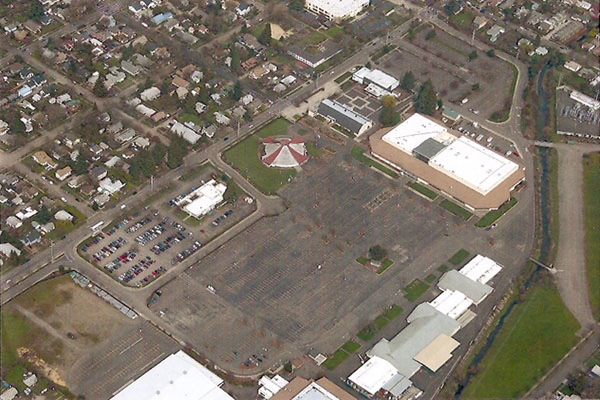
THE LANE COUNTY COMMONS
Community Events and Agricultural Resource Center
A Proposal by the Lane County Fairgrounds Repair Project
The following set of webpages contains a conceptual design and implemenation plan to transform an aging county fairgrounds site in Eugene, Oregon into a state-of-the-art, zero waste, zero net energy community and agricultural resource center. Should this vision be realized, the Lane County Commons would become a one of a kind community asset, a gem in the crown of Oregon's greenest city, a destination for visitors from all over the United States, and a prototype for other urban fairground sites.
Background: The Lane County Fairgrounds* covers fifty-five acres in the center of Eugene, Oregon. The site was first purchased in 1909 from Samantha A. Huddleston for ten dollars and in the following year hosted its first county fair. This location has now been the scene of rodeo events, 4-H exhibitions, logging conventions, home shows, holiday markets, and countless other community gatherings for three generations of Oregonians. The site continues to host the Lane County Fair and many other regular weekend events; however, revenue sources have not covered operation costs for several years and the fairgrounds has relied on County funds from the Federal Timber Subsidy to make it from one year to the next. Those funds were curtailed after the 2008 fiscal year. The Lane County Fairgrounds is currently operating at a loss and without a safety net. Moreover, the conditions of the grounds are in such a sad state that attracting convention business for the Events Center, the only building on the site that makes a profit, has become compromised. The future of this historic site is in jeopardy and has been for quite some time.
The Lane County Commissioners oversee operations of the fairgrounds. On March 12, 2008, the Commissioners convened a public meeting at the fairgrounds in an effort to answer the question: What should we do with the Lane County Fairgrounds? Two options were suggested by the commissioners that night. The first was to sell the property and build a new county fair facility on the outskirts of Eugene. This would cost an estimated $150 million and is an expense far too great for the County at this time. The second option was to spend an estimated $13.5 million for maintenance and repair of the site and see if operations couldn’t limp along until something better could be arranged. In these difficult financial times, even funding those maintenance costs would be difficult to justify and all repairs would have to be prioritized by absolute need and be done one by one as finances allowed. In other words, two options were offered and neither one was workable.
The Lane County Fairgrounds is in dire straits. Instead of simply letting the situation continue unresolved, it is time to go outside the box with something entirely new. This is essentially what the County Commissioners were asking from the 100 or so interested citizens who attended the March 12th meeting–"A vision for the next fifty or one hundred years," as Commissioner Fleenor described it that evening. This proposal by the Fairgrounds Repair Project is just that, a vision for the next 100 years–and a model for the conversion of other dated fairgrounds sites into working demonstrations of sustainable living.
____________
*The Lane County Fairgrounds is officially called the Lane County Events Center. Because there is a building at the site called "The Events Center," for the sake of clarity and ease, this proposal will refer to the site as either the Lane County Fairgrounds or simply the fairgrounds, which will mean the entire 55-acre site.
Note: The proposal presented on the following webpages is a working document. It is subject to additions, changes, and detailing on a regular basis and is also open for comments and suggestions.

